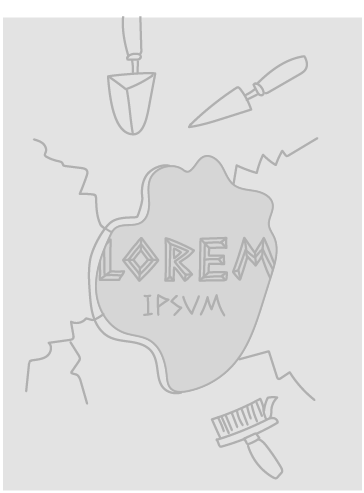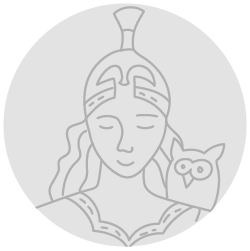Title of the work
Country of the First Edition
Country/countries of popularity
Original Language
Country of the Recording of the Story for the Database
Full Date of the Recording of the Story for the Databasey
More Details of the Recording of the Story for the Database
Genre
Myths
Target Audience
Crossover (Young adults + adults)
Cover

We are still trying to obtain permission for posting the original cover.
Author of the Entry:
Divine Che Neba, University of Yaoundé 1, nebankiwang@yahoo.com
Peer-reviewer of the Entry:
Eleanor A. Dasi, University of Yaoundé 1, wandasi5@yahoo.com
Elizabeth Hale, University of New England, ehale@une.edu.au

Elisabeth Belomo (Storyteller)
Age of Narrator: 55 (in 2016)
Social status: Ekang Women Leader
Profession: Catechist
Language of narration: Ewondo (one of the languages of the Ekang ethnic group)
Bio prepared by Divine Che Neba, University of Yaoundé 1, nebankiwang@yahoo.com
Origin/Cultural Background/Dating
Cultural Background*: Ewondo, the rain-forest, agro-fishery and Kolo-speaking people, are of the larger Beti-Pahuin ethnic group of Bantu origin. They are known for their Bikutsi music genre. The word “bikutsi” means “beat the earth” or “let's beat the earth”, literally indicating a dance that is accompanied by stomping the feet on the ground. The Ewondo people (or Kolo-Beti) speak Ewondo or Kolo language, a Bantu language, a branch of the larger Niger-Congo language family. Originally the Ewondo practice ancestral rites marked by a certain monotheism, but with the arrival of the Europeans most of them are now now nominal Christians.
Occasion: Staged performance
* Sources:
Ewondo (Yaunde) People: The Original Inhabitants of Yaounde, the Capital of Cameroon, kwekudee-tripdownmemorylane.blogspot.com, September 18, 2014 (accessed; May 29, 2019).
Tatiana Agostino, Ethnie Ewondo au Cameroun: connaître l’essentiel, cotedivoire.news (accessed: May 29, 2019).
Sequels, Prequels and Spin-offs
The story is a prequel of The Mysterious Staff of Ngat (accesed: September 13, 2021).
Summary
The Bantou are people from the southern part of Sudan, in North Africa. They lived in this part of the continent for ages in perfect serenity with neighbours. The Arabs and the Hausas then came and chased them from this place. In the course of fleeing from the Muslims, they stopped in the Central African region precisely in Cameroon and lived in the north of the country. Nanga, one of the Bantou, had many children namely Kolo Beti, Eton Beti, Mvele Beti, Fang Beti, Bika Beti, Bulu (the only girl) and Ntumu the last son.
They lived in this part of the country for several years with their kindred before being attacked by the Peuhl. The attacks were due to Islamic expansion initiated by Ousman Dan Fodio who wished to convert these Bantou, who were animists, to Islam. But Nanga and his children refused to become Muslims thus they once again had to leave the north of Cameroon in quest of another place to live. They then moved to the centre of the country and came across a big river called Yom.
The river divided the country in two parts and there was no bridge on which to cross to the other side. Nanga and his sons therefore had to stay along the banks of the river. He hoped their journey had come to an end, but once again the Muslims attacked them and this time, something had to be done since they could not move backwards. Nanga and his followers then thought about the fetishes they brought from Soudan. One night, they assembled and invoked a snake called Ngan-Medza. They made it lie in the river as a bridge to permit them cross the river. That same night, people were mandated to take care of the snake for the time it served as a bridge. They were to stay along the river banks for the rest of their lives to make sure nothing would hurt the fetish.
In the morning, people only saw a bridge lying in the river and were happy because they were saved from the Muslims. They then packed their things and were about to cross when the elders stopped them. The elders gave these instructions: “while we will be crossing this bridge, let no one set something sharp on it or throw something that could harm it.” The instruction was to make sure the fetish will not be harmed since people did not know the nature of the bridge they were crossing on. They then started crossing. People crossed Yom for years in total respect of the instructions established by the ancestors. And those who were mandated reminded those who came of these instructions. It happened once that kindred of Nanga wanted to cross at night. The leader of the group was at the rear of the group with a lighted bamboo that served as torchlight. As he was crossing, the bamboo had burnt to almost the end and it burnt his hand. When he felt the pain, he threw it down together with his sword too. These two objects fell on the bridge; the sword wounded the snake and the fire burnt it. When Ngan-Medza felt the pain, it turned and disappeared into the river. Some people had finished crossing, others were on it while some were yet to start. Those who were on the bridge where drowned and those who were still to start remained on the other side. It is only on that day that people knew they had been walking on a snake all this while.
Fang Beti, Bulu, and Ntumu succeeded in crossing the river. As they crossed, they took different destinations through the southern part of Cameroon to some neighbouring countries like Equatorial Guinea, Gabon and Congo. The kindred of Ntumu can be found nowadays in Equatorial Guinea, and in some towns in Cameroon particularly Ambam. That of Fang is found in Congo, Gabon and part of south Cameroon specifically in towns like Oveng, Djoum and Kiey-osi. Bulu, the only girl, also went to the south of Cameroon and her kindred can be found in towns such as Sangmelima and Ebolowa. Beti Kolo, commonly called Ewondo, and his brother Eton, for their own part, remained in the centre part of the country. Their kindred are found nowadays in towns such as Yaounde, Saa, Akonolinga, Obala, and Monatele. Those who were mandated to stay along the river banks were the Mvele. His kindred are made up of those who are now called the Bassaa of the Centre and others such as the Batouké and Mvute specifically found in Eséka. Some of the Mvute and Batouke can also be found in lands near Adamawa.
These various migrations brought them in contact with many other ethnic groups and the language interference had a great impact on their language. That is the reason why the Beti have different mother tongues, which are nonetheless mutually intelligible.
Analysis
In most world mythologies, the snake is viewed as a double-edged figure, representing good and evil. Among the Beti-fang of Cameroon, the snake represents the good and the exotic, following its liberating role in Beti-fang mythology. From this position, it shares attributes with the Dahomeyan snake god Danh, who cossets and prevents the world from falling apart; the Egyptian Ouroboros [the Greek name meaning tail-devourer], with his eternal ring that encloses the world; the Sumerian Ninazu, with healing powers, and the bronze snake of Moses in the Bible. One cannot ignore the rod of Asclepius, used as a symbol of healing in Greek mythology. We liken these to Ngan Medza because of their usefulness to humankind.
Further Reading
Deane, John Bathurst, Worship of the Serpent: Traced Throughout the World, London: Gilbert And Rivington Printers, 1833.
Henderson, Joseph Lewis and Maud Oakes, The Wisdom of the Serpent, Princeton: Princeton University Press, 1990.
"Serpent", New World Encyclopedia, newworldencyclopedia.org (accessed: May 29, 2019).
Addenda
Method of data collection: Note- taking.
Researcher: Divine Che Neba.
Research Assistant: Marcelle Akamba (trans.).
Editor: Eleanor A. Dasi.


